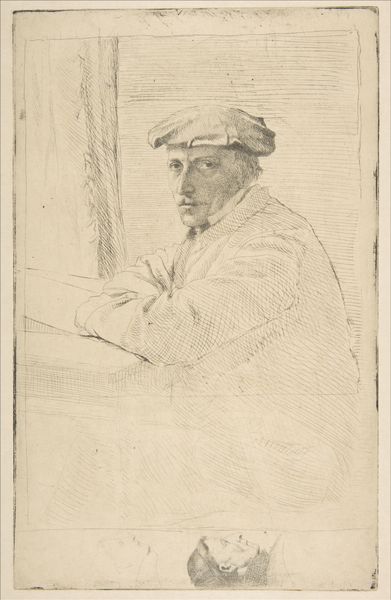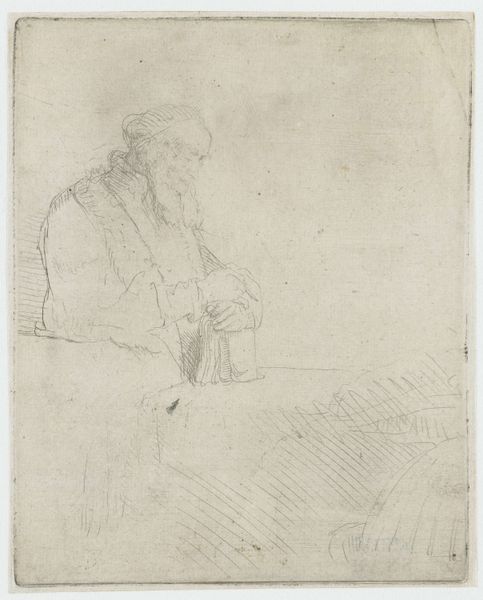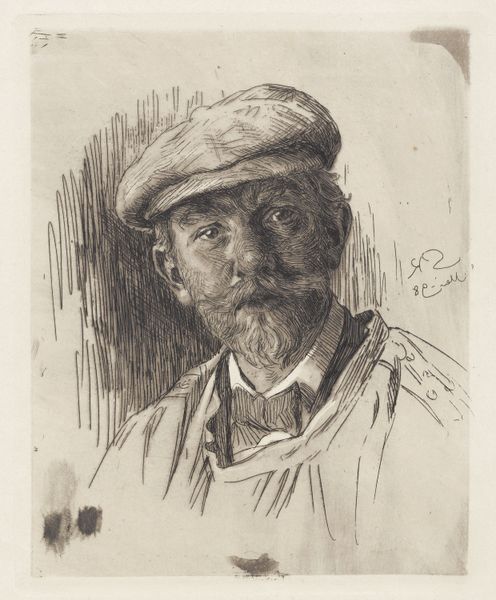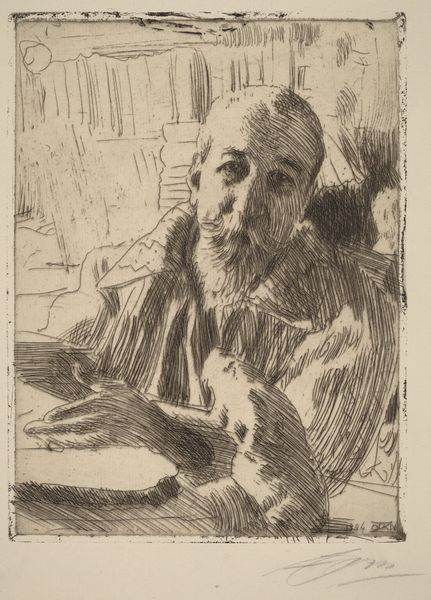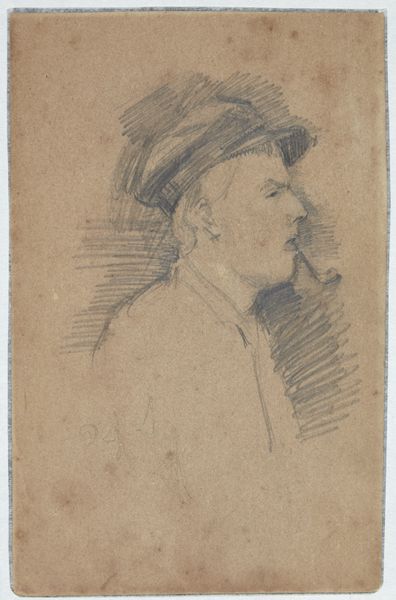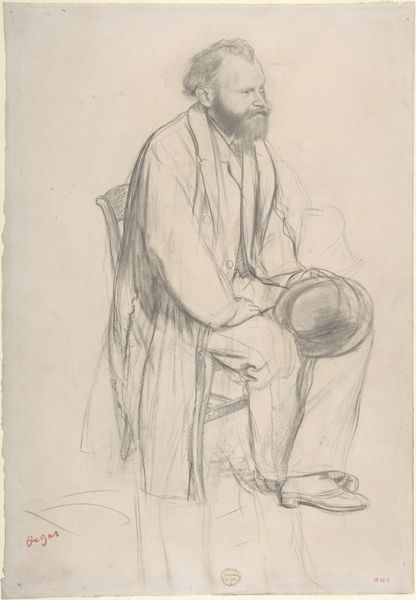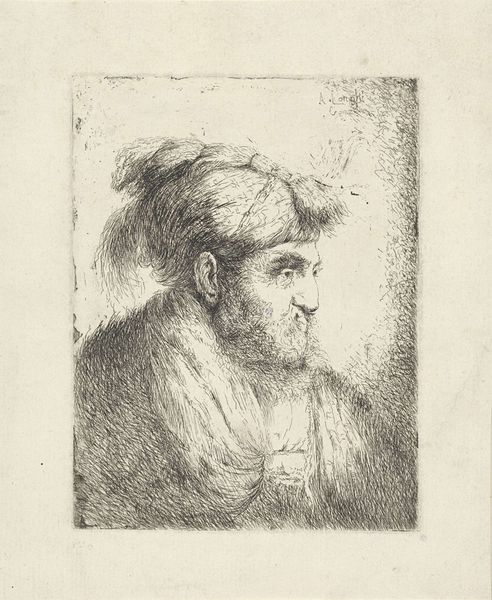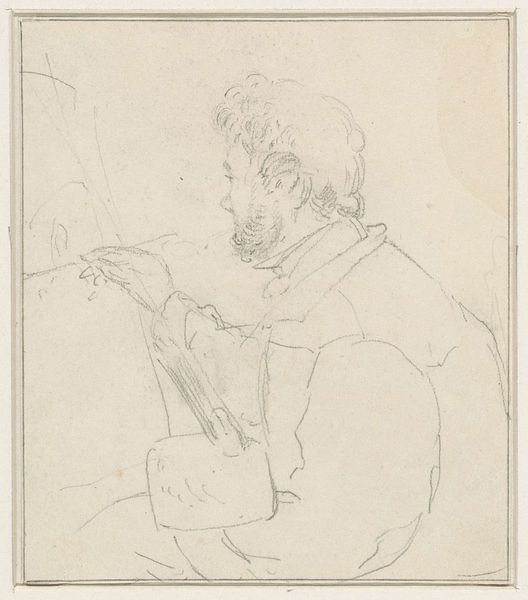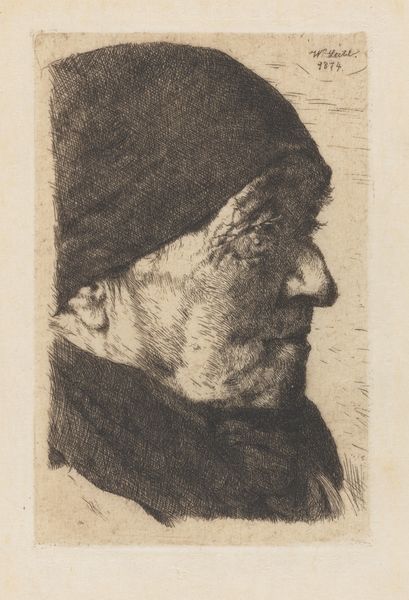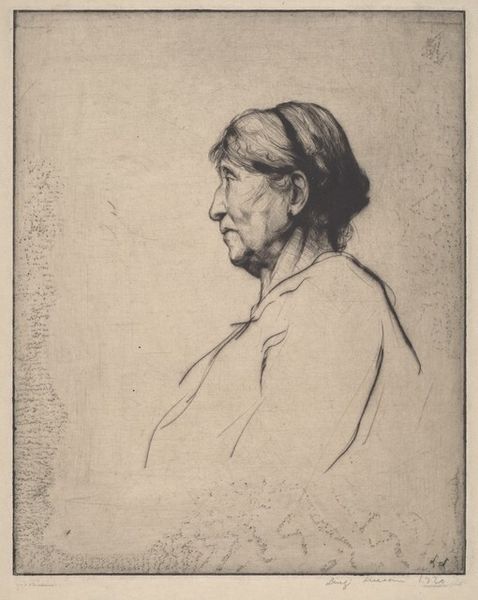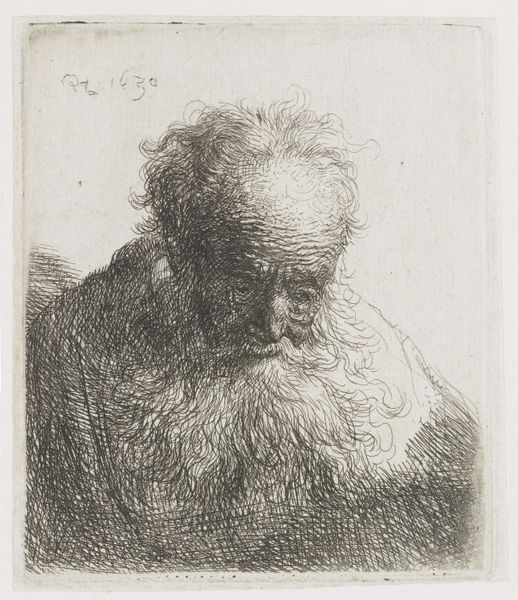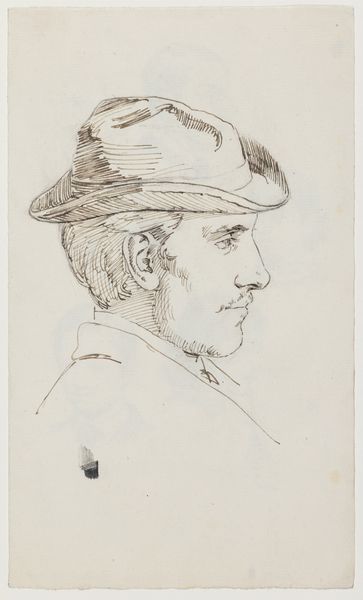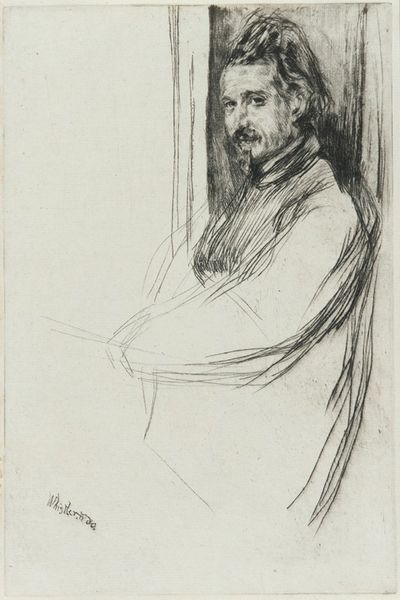
drawing, print, etching
#
portrait
#
drawing
# print
#
etching
#
etching
Dimensions: plate: 9 1/16 x 5 11/16in. (23 x 14.4cm) sheet: 12 3/8 x 8 7/8in. (31.5 x 22.5cm)
Copyright: Public Domain
Editor: We’re looking at Edgar Degas's "The Engraver Joseph Tourny," created in 1857 using etching. The delicate lines give it a sketch-like quality, almost unfinished. The figure is really intriguing! What stands out to you? Curator: I am drawn to the subtle textures created by the etching technique. Notice how the density of the lines varies to create a sense of depth and form, particularly in the subject’s face and clothing. Editor: Yes, the lines around his face are much more defined. Curator: Precisely. Observe also the composition. The placement of Tourny leaning on his arms creates strong horizontals, contrasted by the vertical lines of what appears to be a window frame. These elements provide a structure upon which the subject sits in the picture plane. Does this intentional juxtaposition change the overall affect for you? Editor: It does. The contrast gives it more weight, especially with his intense gaze. The technique feels so controlled, despite the image appearing quite casual. Does the print medium itself impact how we view the image? Curator: Undeniably. Etching lends itself to a certain level of detail and intricacy that would be difficult to achieve with other printmaking methods, as such we get both intimacy and precision. Consider also the materiality; the ink, the paper. The choice of materials dictates the final aesthetic. Editor: It’s fascinating how much meaning can be derived from the composition, technique and material properties themselves! Curator: Indeed. By analyzing these intrinsic qualities, we gain deeper insight into the work and its complexities.
Comments
No comments
Be the first to comment and join the conversation on the ultimate creative platform.
